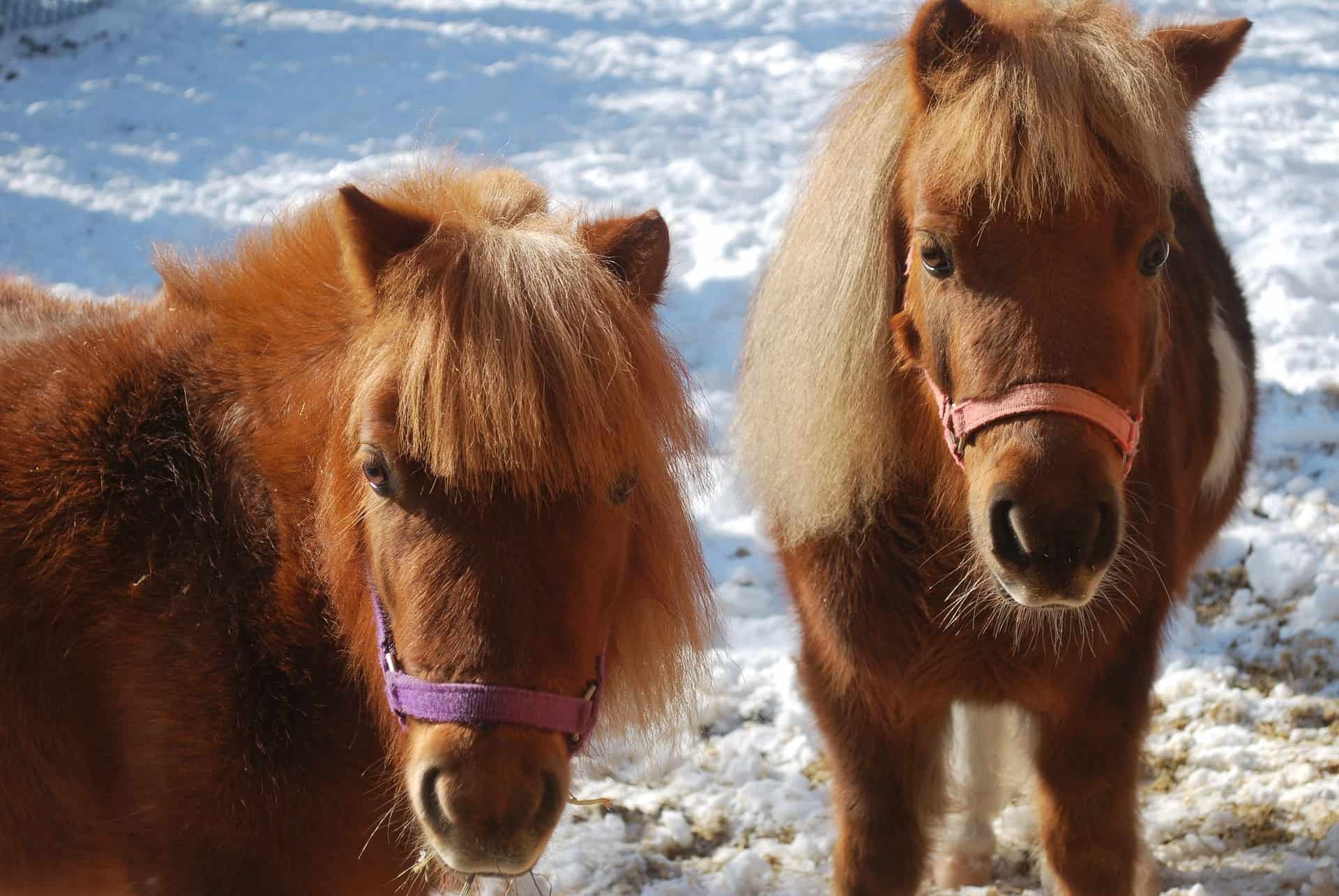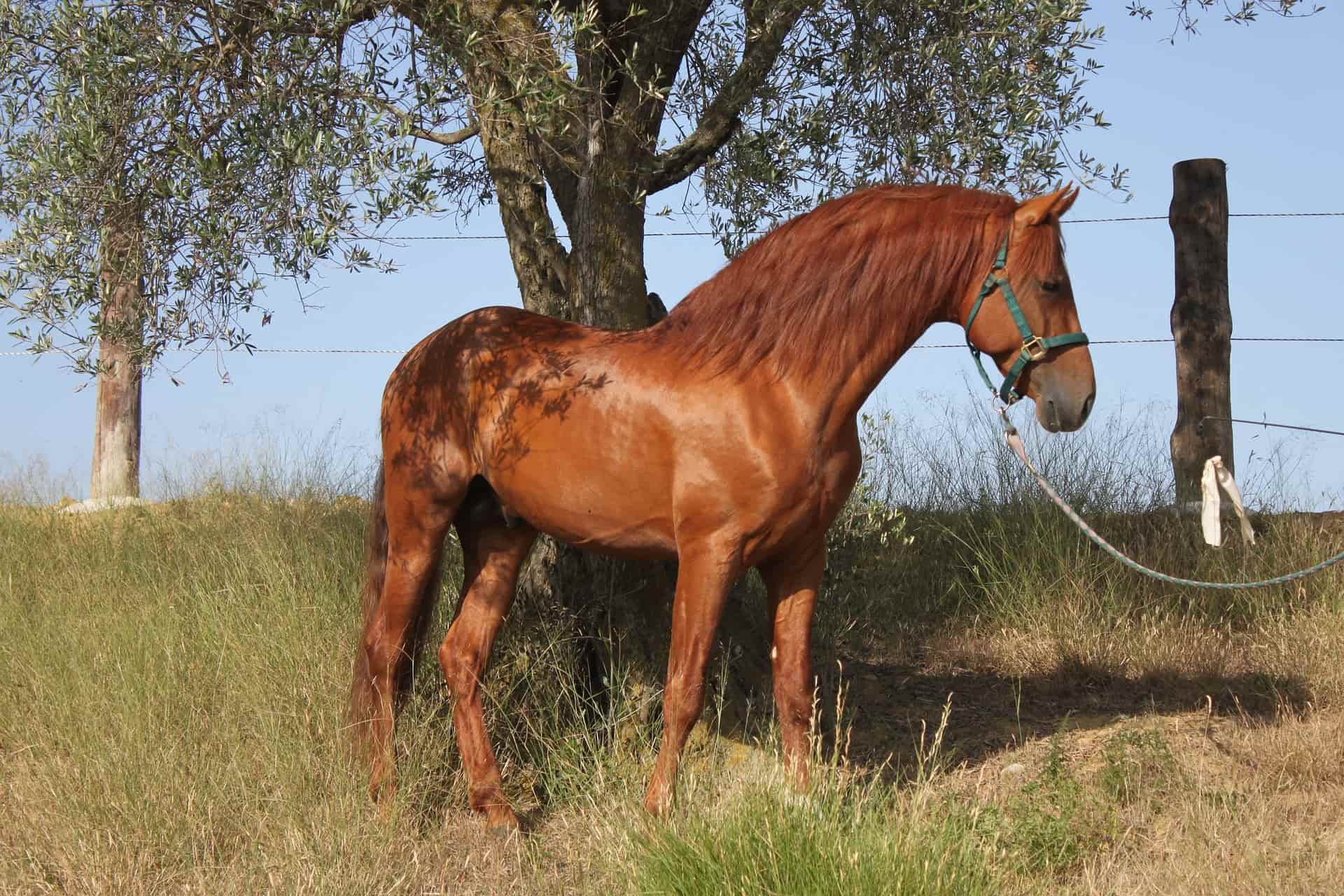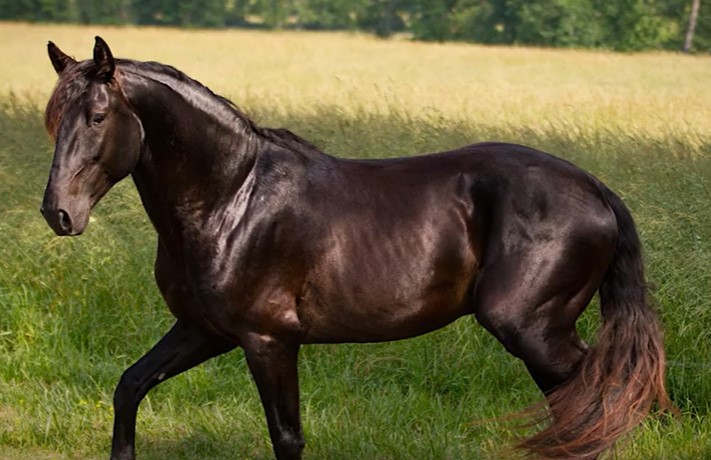If you’ve been thinking about buying or adopting a horse, one thing you should consider is their size. Some horse breeds- like the Belgian Draft and Clydesdale – are pretty big; hence, making them suitable for pulling carriages.
Others, however, come in small packages. These small horses are typically just as strong but some are a little too tiny to support the weights of teens or adults. The focus of our guide is on these smaller horses. Here’s an in-depth look at the smallest horse breeds that exist.
The 12 Smallest Horse Breeds
1. Shetland Pony
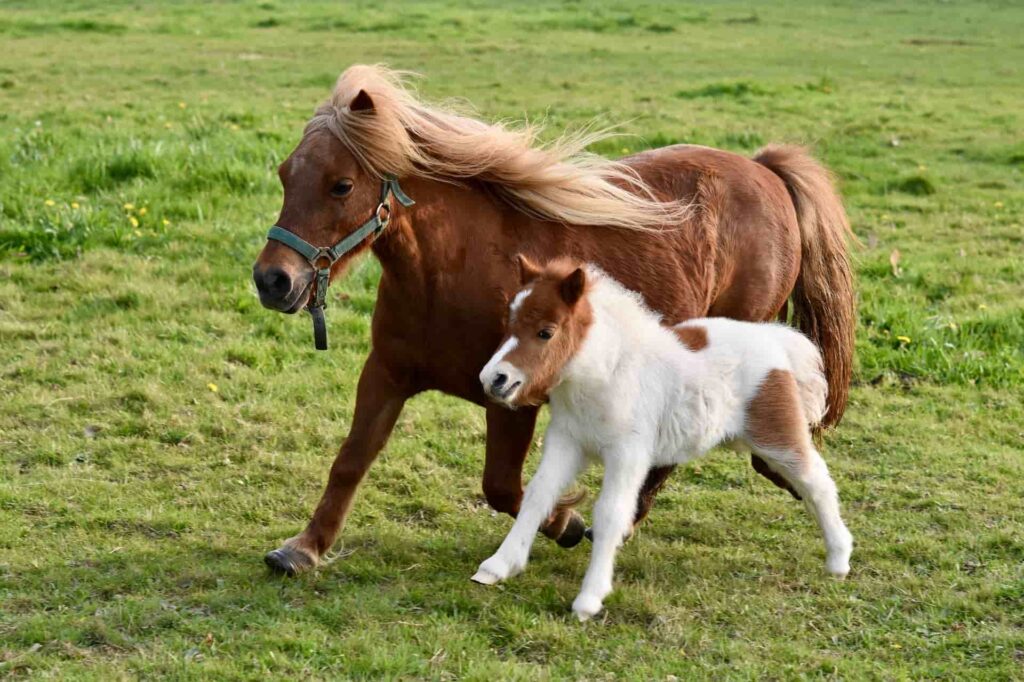
- Height range: 28 to 44 inches
- Weight range: 400 to 450 pounds
- Origin country: Scotland
- Physical characteristics: Wide-set eyes, pointed small ears, a small head, thick muscular necks and a stout body
The Shetland Pony is native to Shetland Islands, located to the north-east of Scotland.
However, it’s not very clear how this horse breed was developed. All that’s known is that the Shetland Pony was domesticated early on.
Given the topography of the island, these horses grew up enduring harsh climatic conditions, food scarcity and rugged terrains. This enabled them to develop into extremely hardy animals.
As a result, most Shetland ponies were used as pack horses to plow farms or lug heaps of coal in underground mines.
Thankfully, the Shetland pony is no longer used for such applications. Presently, it’s used for pleasure riding and driving.
A lot of Shetland ponies are also put to work in commercial settings like carnivals and fairs to offer short rides. Some have proven useful in horseback therapy riding and yet others are used in petting zoos.
2. Miniature Horse
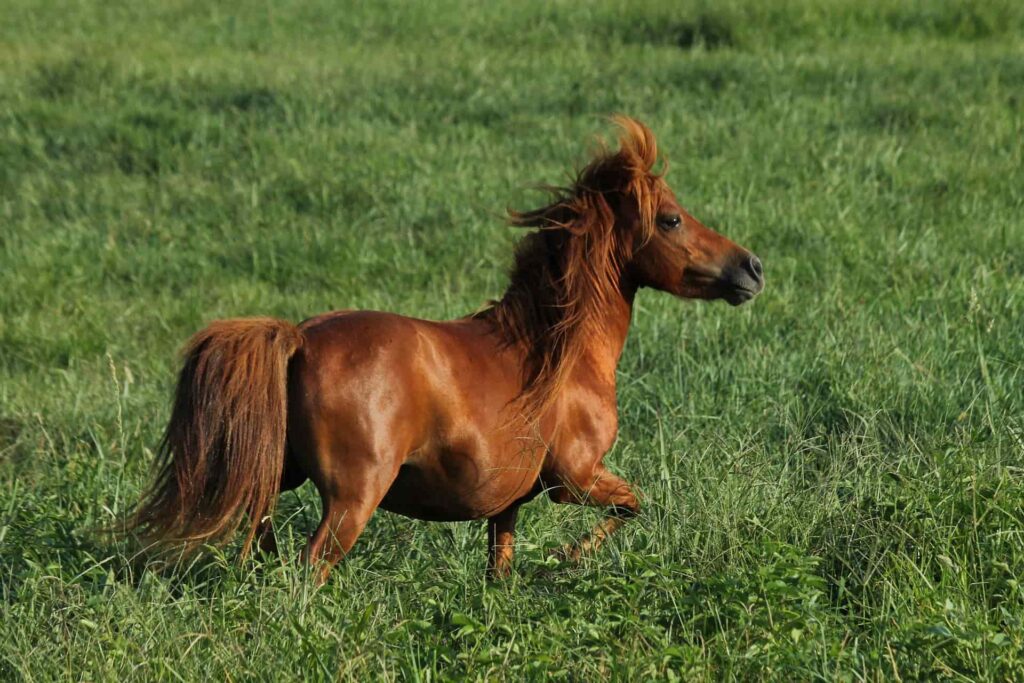
- Height range: 34 to 38 inches
- Weight range: 150 to 350 pounds
- Origin country: Europe
- Physical characteristics: Long, angled shoulders, medium-sized ears, upright legs and a short back
With a maximum height of just 38 inches, the miniature horse is one of the smallest breeds worldwide.
However, this breed has a distinct look in that it resembles a full-sized horse that’s simply been shrunk down. This is contrary to other small breeds that tend to have stocky bodies and short legs.
In addition to their small stature, most miniature horses have impeccable social skills. This explains why they’re often kept as house pets and therapy animals. The American Miniature horse is also regarded as one of the faster horse breeds in the world.
Important to note though is that such a small horse breed cannot be ridden by a teenager or adult. As a result, most owners use miniature horses primarily to pull heavy loads.
Thinking of adopting or buying a miniature horse for small children? If so, then be sure to check its history and pedigree in the registry. This breed lives an average lifespan of 25-35 years.
Interestingly, there are two miniature horse registries: the American Miniature Horse Registry and the American Miniature Horse Association (AMHA).
3. Noma Pony
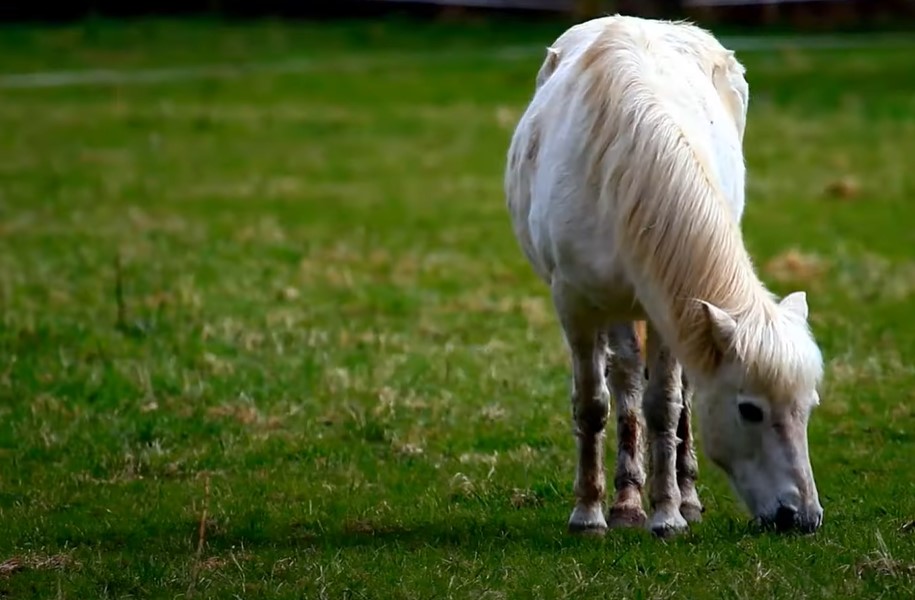
- Height range: 40 to 41 inches
- Weight range: 450 pounds
- Origin country: Japan
- Physical characteristics: Sturdy hooves, thin legs, cylindrical-shaped body
Among all the native horse breeds in Japan, the Noma Pony is the smallest.
The Noma horse traces its roots back to the 17th century. At the time, it was used in the second World War where it served as a pack animal. This breed has always had a strong and chunky structure so it did an excellent job of carrying heavy loads.
Another interesting fact about the Noma horse is that it’s amongst the rarest breeds worldwide. At one point, only six small ponies existed. Thankfully, breeding efforts were amped up and this helped to increase its population.
In the early 20th century, many breeders decided to introduce Thoroughbred blood into this pony, which initially originated from Mongolian horses.
Cross breeding these ponies with Thoroughbred horses made them stronger; hence, why they were used as war horses. Another thing that improved this breed’s chances was the creation of a breed association (in 1978) dedicated to preserving it.
4. Yonaguni
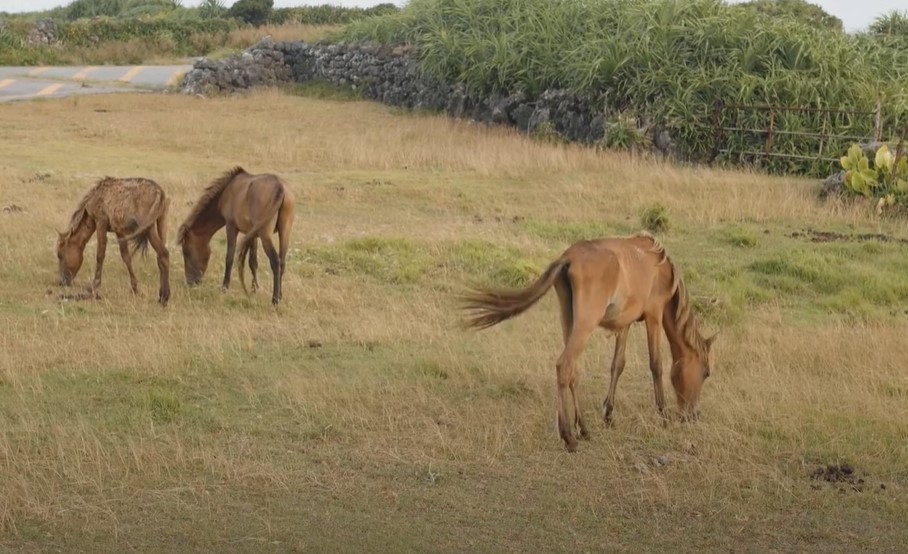
- Height range: 46 to 47 inches
- Weight range: 440 pounds
- Origin country: Japan
- Physical characteristics: Big head, straight and long neck, erect shoulders and a sloping back
This horse breed is named after the island where it was developed, Yonaguni Island in western Japan. It’s also referred to as “shima uma” which translates to island horse.
Historically, the Yonaguni horse was used for farm work, especially transportation. The fact that it’s a pack animal and has strong legs made it very handy for plowing and transporting things.
But like the Noma pony – which is also native to Japan – its use in the agricultural sector was short-lived. With mechanization of farming, their use as farm horses dwindled.
Today, the Yonaguni horse lives semi-wild in the island and is used mainly for recreational riding. Yonaguni residents view this breed as an integral part of the island’s culture; so it’s highly protected.
5. Class B Kentucky Mountain Horse

- Height range: 44 to 57 inches
- Weight range: 950 pounds
- Origin country: Kentucky, USA
- Physical characteristics: An arched neck, sloping shoulders and deep chest
There are two varieties of the Kentucky Mountain Saddle horse breed. The first category, referred to as “Class A”, comprises all horses that are taller than 57 inches. The second category – class B – consists of any smaller breeds that are shorter than this.
Specifically, the class B Kentucky Mountain horse height starts from 44 inches. This means it meets the requirements of small horse breeds. Most horses in this category come in solid colors with white spots on their face, belly, and legs.
Recommended Read: Most Popular Spotted Horse Breeds
6. Icelandic Horse
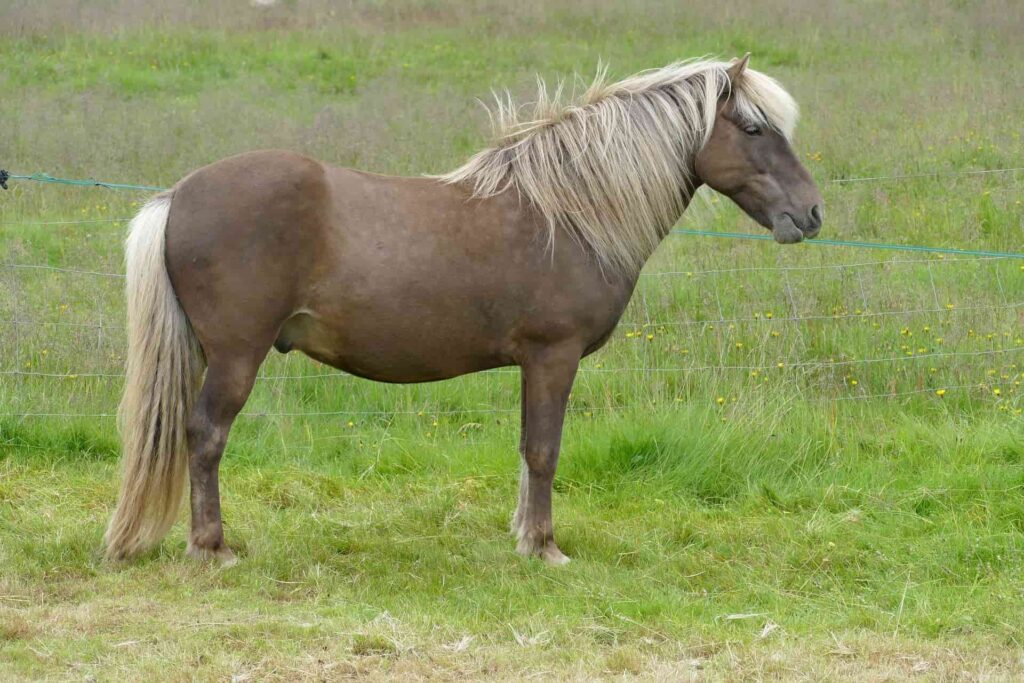
- Height range: 52 to 56 inches
- Weight range: 730 to 840 pounds
- Origin country: Iceland
- Physical characteristics: A straight profile with a nicely-proportioned head, short neck and muscular body
Beautiful in black and white, and regarded as the pride and joy of Iceland, the Icelandic horse is the only breed allowed in this country. It’s a hardy horse, having adapted to the harsh winter conditions of this country. At the same time, it has a gentle and friendly side to it that makes it an excellent family horse.
Icelandic horses are also revered for their versatility. They are a gaited breed and excel in any activity they’re subjected to. So while some of them are used as companion animals, others are bred to work. In fact, a lot of Icelandic horses are used to manage animal flocks to-date.
And even though this breed is categorized as a small horse, it’s just 3 inches shorter than a normal-sized horse.
7. American Quarter Pony

- Height range: 45 to 57 inches
- Weight range: 800 to 900 pounds
- Origin country: U.S.A
- Physical characteristics: Nicely-developed jaws, small ears, medium-long neck, high shoulders and a broad chest
The Quarter Pony is often described as a “miniature American Quarter horse.” And, to a great extent it is. The American Quarter Horse Association only registers horses that are taller than 14.2 hands. So any horse that’s shorter than this falls under the category of Quarter Ponies.
However, this isn’t the only thing that differentiate this breed from other quarter horses. Quarter horses typically come in solid colors. Contrary to this, the Quarter Pony can be found in both solid and mixed colors.
Despite its short stature, the American Quarter Pony is a strong horse breed. Small ponies such as this are perfect for novice or young riders. So you’ll often find it in western riding shows.
8. Falabella Horse
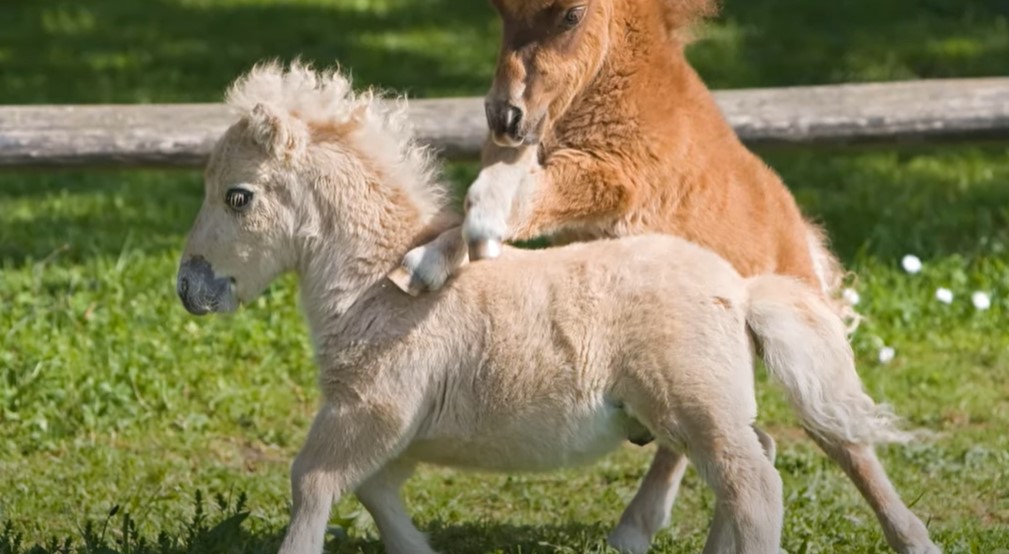
- Height range: 25 to 34 inches
- Weight range: 40 to 180 pounds
- Origin country: Argentina
- Physical characteristics: Petite and proportional frame, big head, smooth coat
The Falabella wins the crown for being the smallest horse breed globally. This horse breed first gained formal recognition in 1940. This occurred when Julio Falabella registered it in Argentina. As you might have guessed, this also explains how the horse breed got its name.
In the years that followed, the Falabella family amped up their breeding efforts of these miniature horses. They crossbred them with both Shetland and Welsh ponies. The development of these small horses was also influenced heavily by Iberian horses, specifically, the Criollo breed.
This is how Falabella horses got their perfectly-proportional bodies- a factor that makes it easier for them to breed naturally.
The modern-day Falabella horse is mainly used to pull kids’ carriages. However, if you’re searching for a breed that would serve as a house horse, the Falabella is well-suited for this.
9. Guoxia Horse
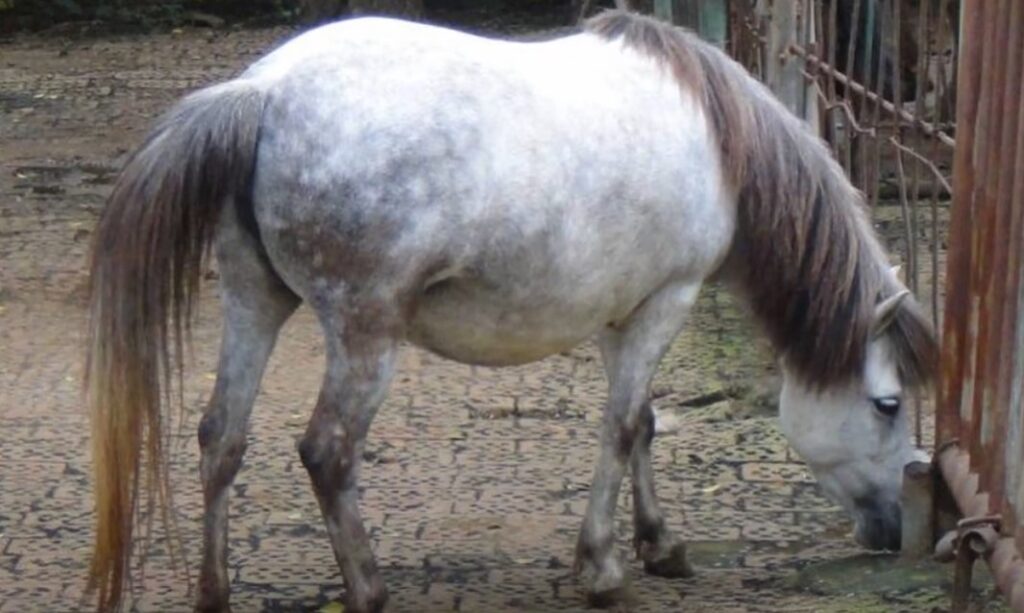
- Height range: 32 to 40 inches
- Weight range: 700 to 800 pounds
- Origin country: China
- Physical characteristics: Short neck, straight back, tiny ears.
Unfortunately, the Guoxia horse isn’t a very popular breed. The only thing we know about this horse is that it’s a breed originating from China, where it was developed about 2,000 years ago. Another fun fact is that its name translates to “under fruit tree horse.”
That said, Guoxia horses are hard to miss, especially if you know what to look for. They have very small ears, short necks, and straight backs. The majority also have a small head and are available in different coat colors. However, the most popular ones are gray, bay and roan (learn what consitututes truly roan horses).
The Guoxia is one of the few pony breeds that are considered purebred. And thanks to their compact size, Guoxia horses are often used in petting zoos and kids’ rides, particularly in Southern China.
10. Fjord Horse
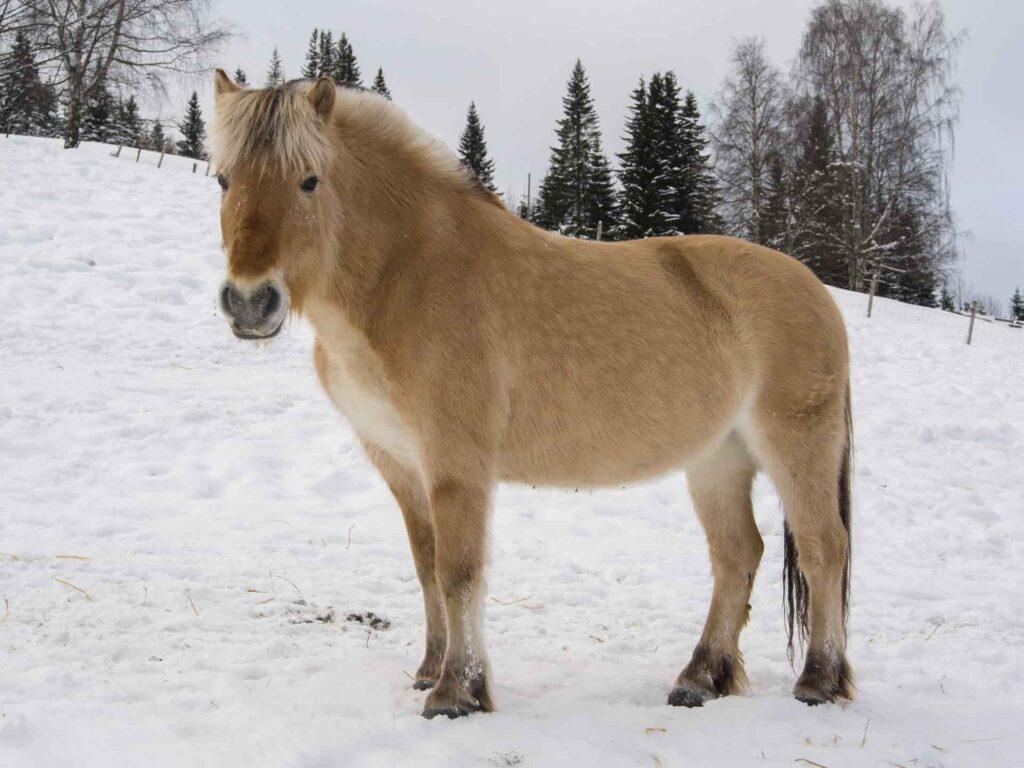
- Height range: 52 to 57 inches
- Weight range: 880 to 1,100 pounds
- Origin country: Norway
- Physical characteristics: An upright mane, arched neck, flat forehead and variants of the dun color
Also known as the Norwegian Fjord Horse, this breed originated from the mountainous terrain of western Norway.
Fjord horses have a pretty unique appearance. Although they’re small, they have the stocky build of draft horses. In fact, they’re capable of carrying an adult effortlessly.
The Fjord horse is also very agile and is easy to distinguish using its dun coat, erect mane and unique markings.
Initially, this small horse was used mainly for agricultural work. It spent most of its life on the farm, helping to plow and haul items. But presently, it leads a more laid-back life where it pulls tourist coaches.
11. Haflinger
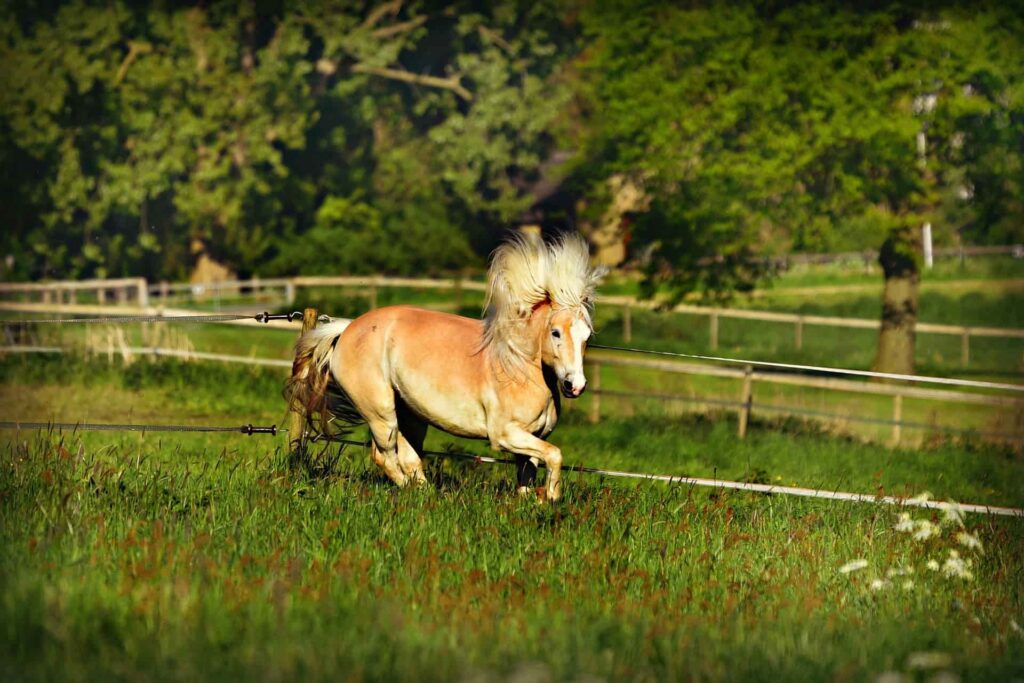
- Height range: 54 to 60 inches
- Weight range: 800 to 1,300 pounds
- Origin country: Austria
- Physical characteristics: Muscular build with strong legs and hooves, large head, medium-long neck
Like the majority of miniature horses, the Haflinger gets its name from the region it was developed. Specifically, it was first bred in Haflige province of Austria and also in Northern Italy (one of the common Italian horse breeds). With an average height of 56 inches, it’s one of the larger horses in this category.
There’s a lot to love about Haflingers starting with their tolerance and hardiness. These horses have lived in mountainous regions their entire lives. As a result, they’ve learned to survive on little food and thin air.
Another reason why we love the Haflinger horse is that it has a wonderful personality. They’re friendly- a trait that makes for excellent family horses.
12. Welsh Pony

- Height range: 44 to 57 inches
- Weight range: 400 to 700 pounds
- Origin country: Wales, Great Britain
- Physical characteristics: Sloping shoulders, a short back, muscular hindquarters and large pony eyes.
Other than the Shetland pony, Welsh pony is the second most popular pony horse breed used for riding in Germany.
Welsh ponies are revered for their friendly temperament, which makes them the perfect horses for young riders. They’re very people-oriented, and like to form deep bonds with their horse owner.
Since the creation of the English breeding society back in 1901, Welsh ponies have been classified into four; section A through D. the smaller ones are about 44 inches while larger horses can go up to 57 inches.
FAQs
What horse is the smallest?
There are numerous miniature horses. But, the Falabella is ranked as the smallest horse breed of all. An adult Falabella weighs just slightly over 100 pounds with a height of 34 inches or less. For comparison purposes see our average horse weights and average horse heights guides.
What is the smallest horse you can ride?
Although smaller horse breeds make great companion animals, they’re not suitable for riding. The golden rule is that no small horse should have to carry more than 20% of its weight. In that regard, breeds such as Falabellas and miniature horses shouldn’t be ridden by adults or older kids.
If you plan to use the horse for pleasure or endurance riding, consider a small horse breed that’s also strong. Think Nomas, Yonaguni and Shetland Pony breeds. If you weigh more than 170 pounds, pick a horse that’s at least 950 pounds.
Also, check out some of the largest horse breeds in the world, and the top trail riding horses if a ride is what you’re looking for.
What is the smallest breed of draft horse?
Compared to other draft small horse breeds, the Haflinger is the tiniest. Others that follow closely behind the Haflinger are Gypsy Vanners, Norwegian Fjord and Black Forest Horses.
Conclusion
Contrary to popular belief, small horse breeds are indispensable. Children find them a pleasure to ride thanks to their small stature and easy-going temperament. They also make great pets, and can be used in shows, parades and circuses.
Wondering which breeds are categorized as being small? Well, some of the smallest horse breeds are the Welsh Pony, Miniature Horse, Guoxia, American Quarter Pony among others.
